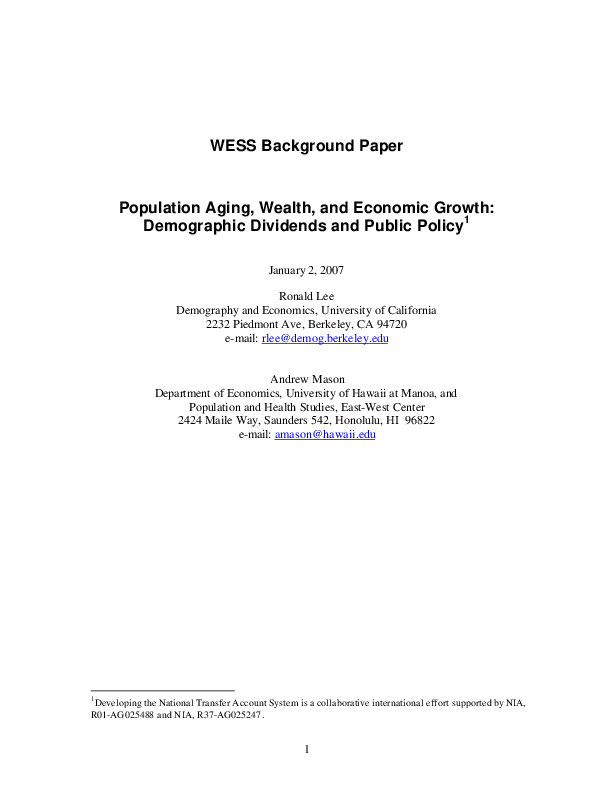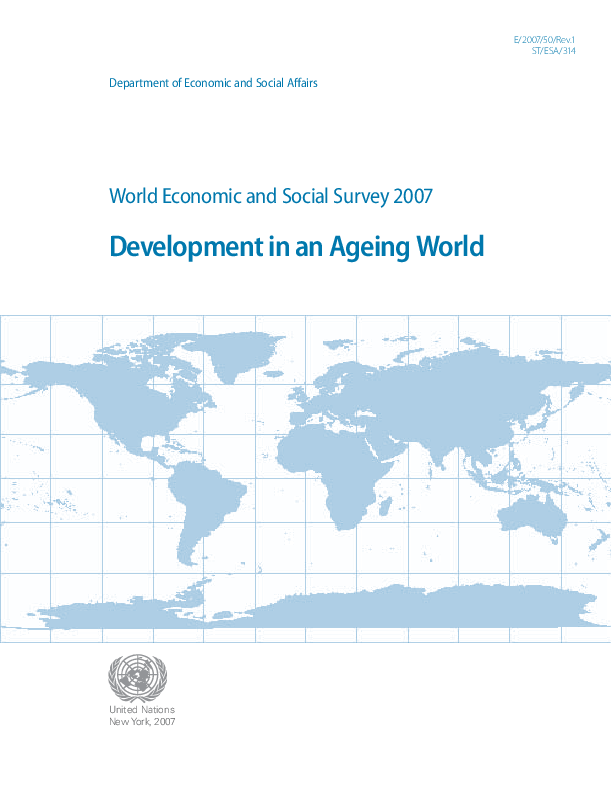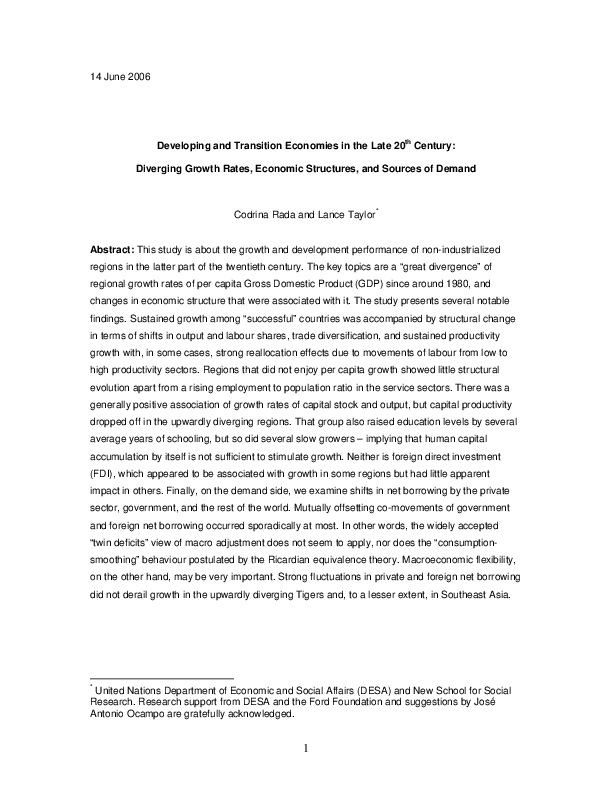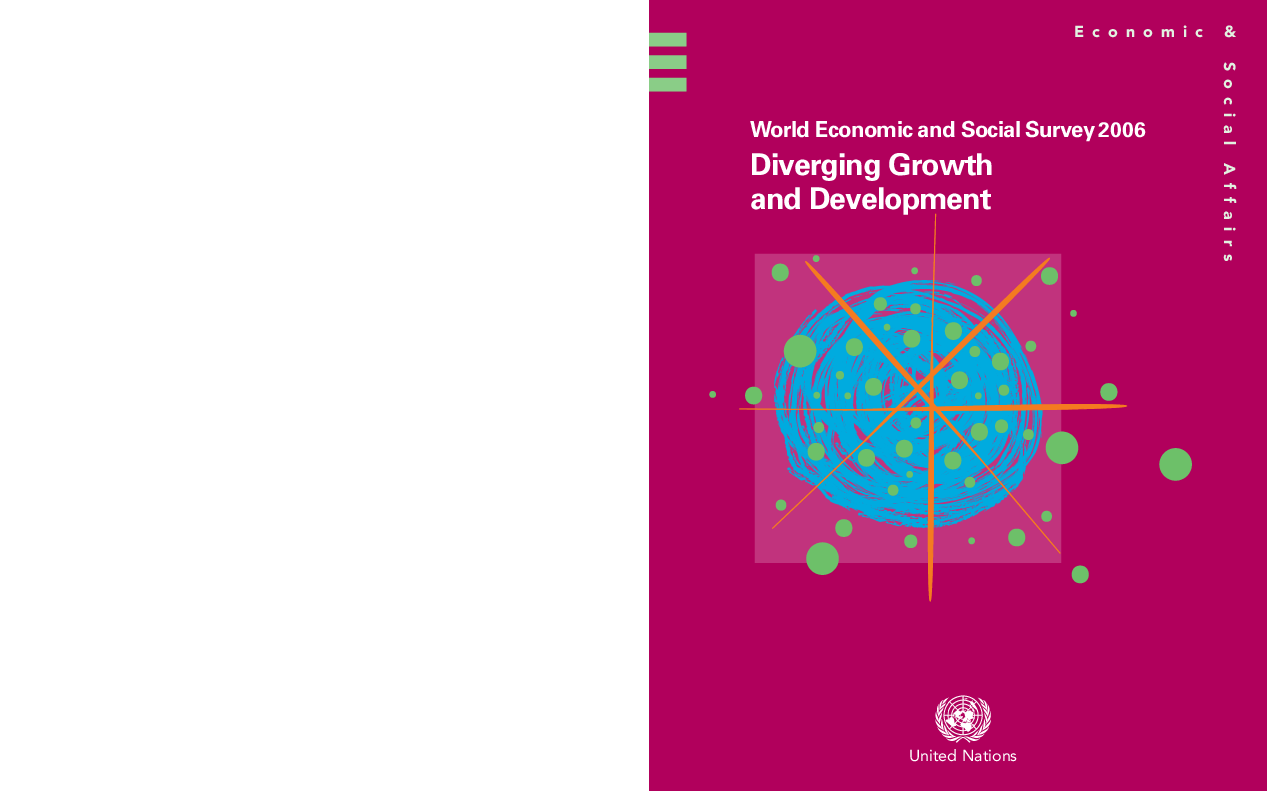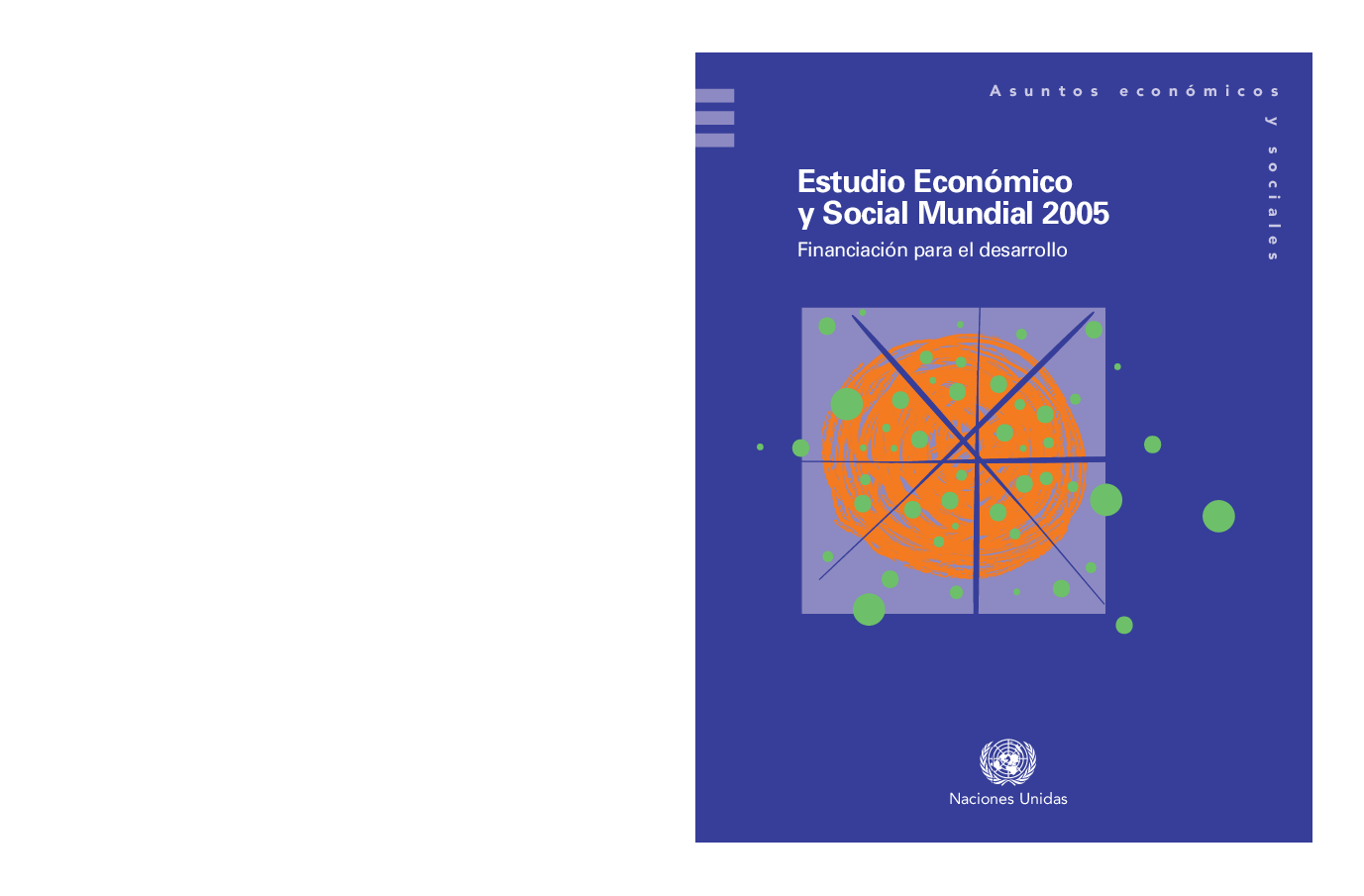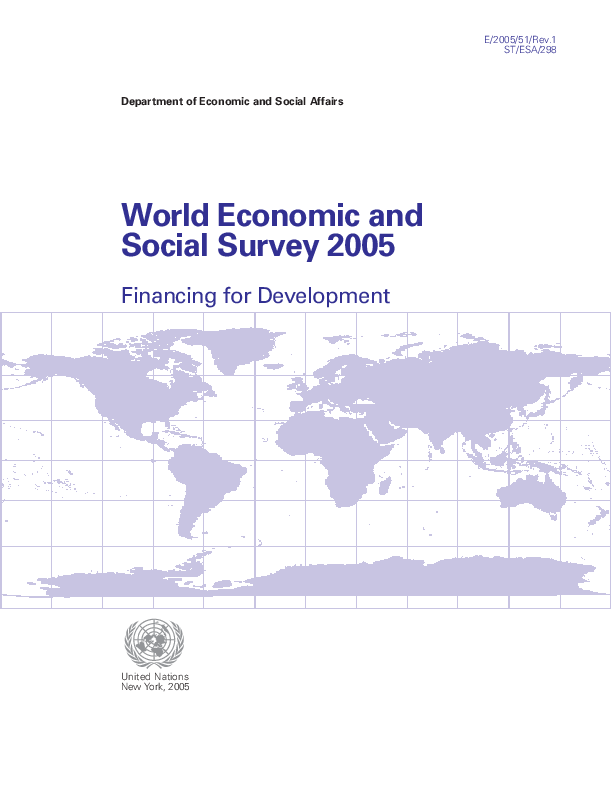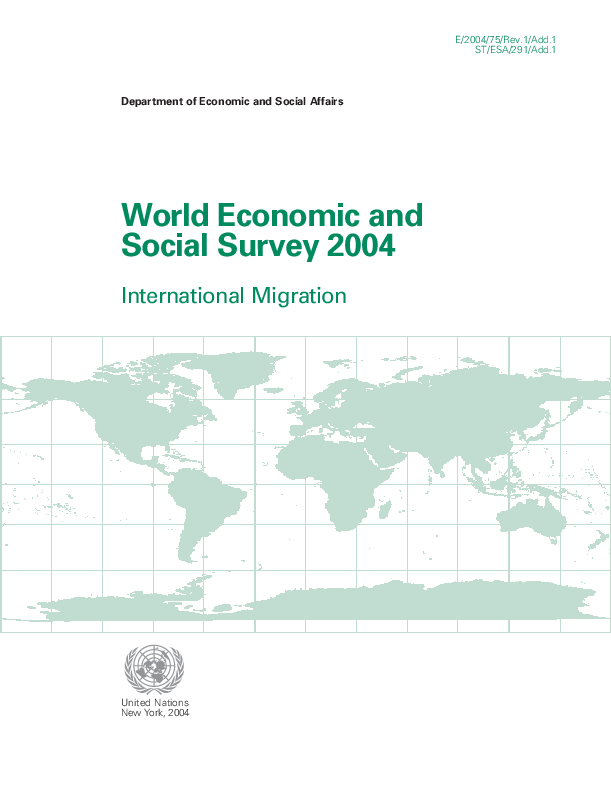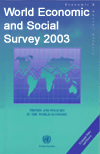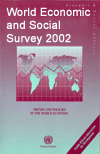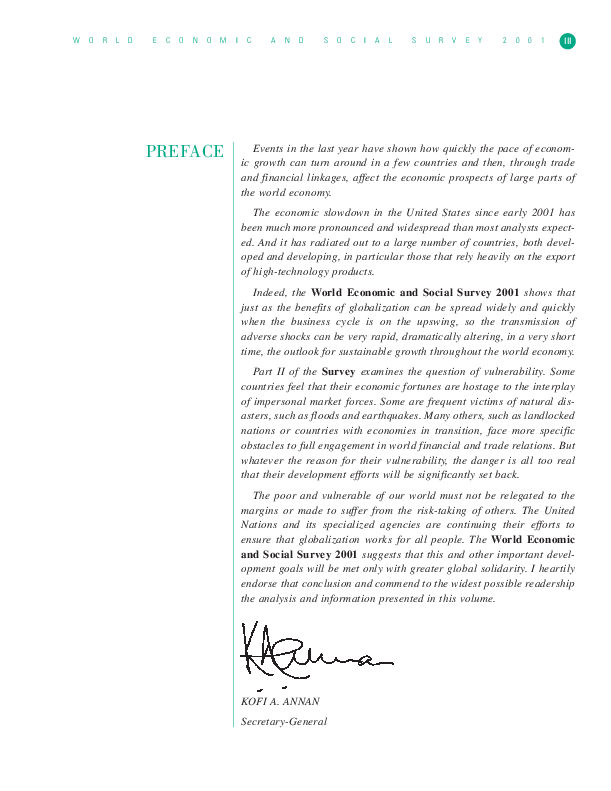Publications
Displaying 21 - 30 of 94
a case study from Australia Theo Vos, John Goss, Stephen Begg and Nicholas Mann Download Paper Poverty among the Elderly in Latin America and the Caribbean Leonardo Gasparini, Javier Alejo, Francisco Haimovich, Sergio Olivieri
and Leopoldo Tornarolli Download Paper The Implications of Aging for the Structure and Stability
of Financial Markets Jane D'Arista Download Paper Population Ageing and Health Expenditure:
Sri Lanka 2001-2101 Ravi P. Rannan-Eliya and Associates Download Paper Publications used in the preparation of the World Economic and Social Survey 2007
and Sources of Demand Codrina Rada and Lance Taylor Download Paper Governance, Economic Growth and Development
since the 1960s Mushtaq H. Khan Download Paper Real Income Stagnation of Countries,1960-2001 Sanjay G. Reddy and Camelia Minoiu Download Paper Turning Swords to Ploughshares & Little Acorns to Tall Trees: the Conflict-Growth Nexus & the Poverty of Nations S, Mansoob Murshed Download Paper Financial Development and Economic Growth: a Critical View Valpy FitzGerald Download Paper Have Collapses in Infrastructure Spending led to
Cross-Country… Publications used in the preparation of the World Economic and Social Survey 2006
ISBN 92-1-109149-7 Download Full report: English Français Español Buy copy from UN Publications World Economic and Social Survey 2005 Fench
ISBN 92-1-109149-7 Download Full report: English Français Español Buy copy from UN Publications World Economic and Social Survey 2005
ISBN 92-1-109145-4
Download Full report in English Part II. International Migration The second part of the World Economic and Social Survey 2004 addresses international migration. It examines historical and recent surges in migration, policies towards migration, its economic and social effects, the question… World Economic and Social Survey 2004
 Welcome to the United Nations
Welcome to the United Nations
